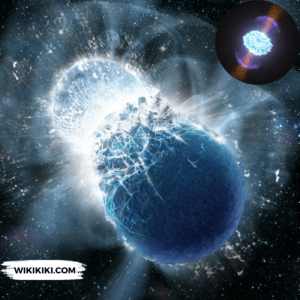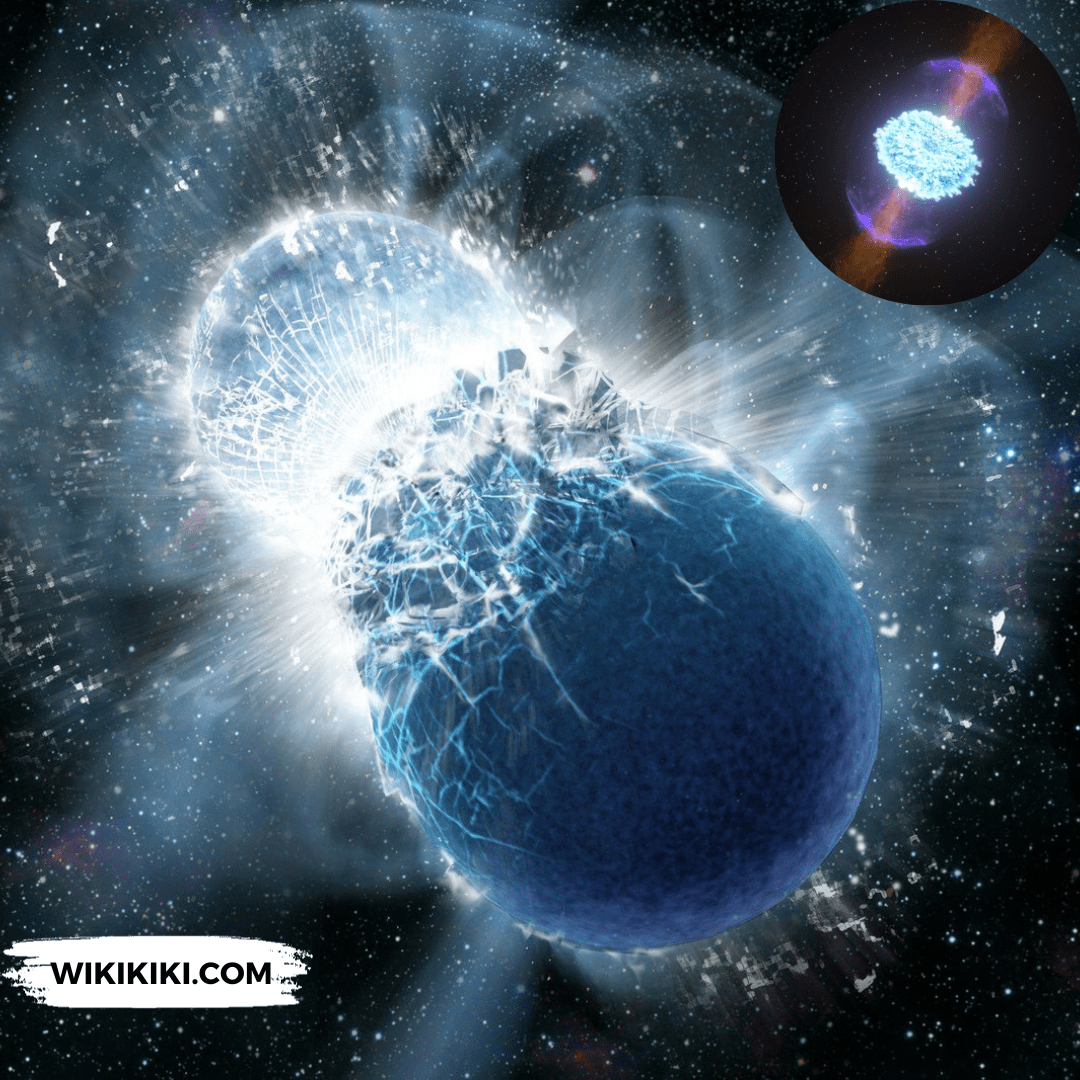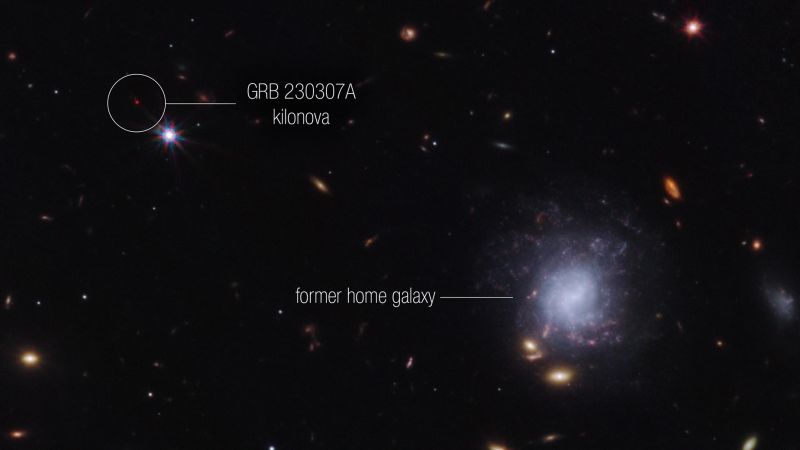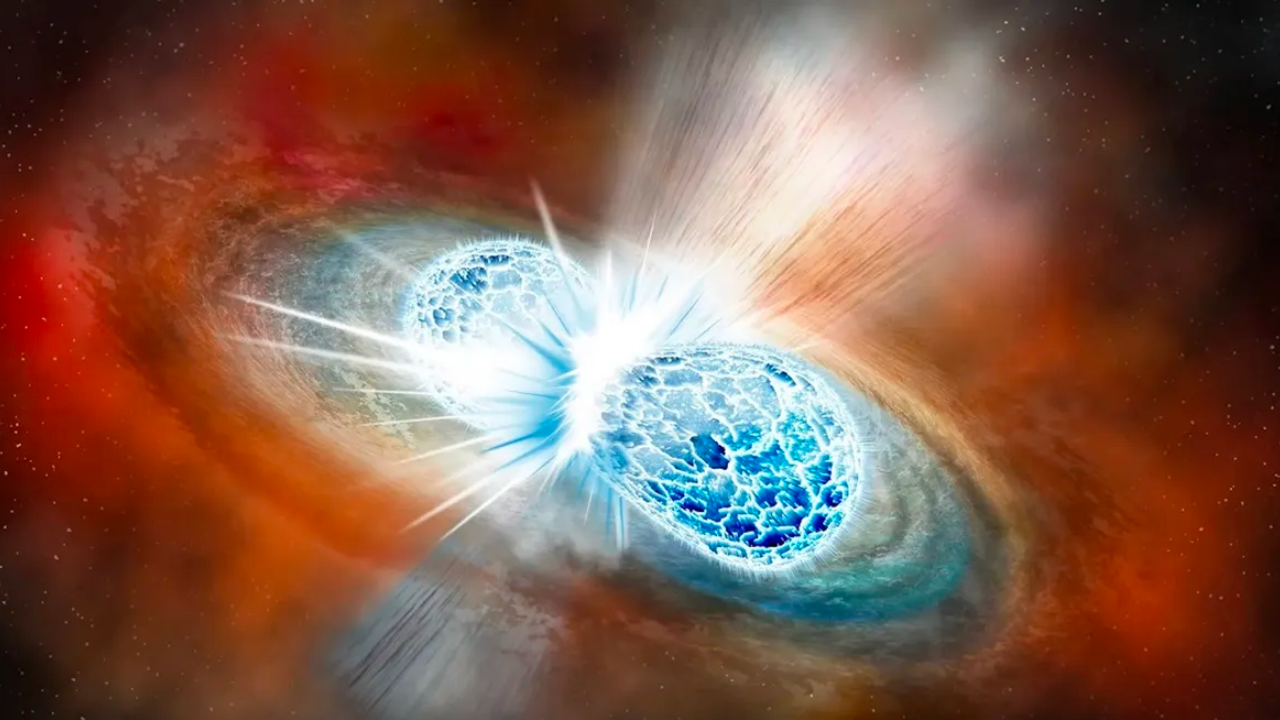Scientists have discovered a cosmic threat to our planet, kilonova explosions in space. These star collisions, also known as kilonovae, have the potential to bring catastrophic consequences to Earth due to the release of lethal radiation, including gamma rays, cosmic rays, and x-rays.

Also Read: Rats have the Power to Imagine, Research Reveals
Kilonova explosions are among the most powerful and explosive events in the known universe. They occur when two ultra-dense celestial objects, typically neutron stars or a neutron star and a black hole, collide. The collision generates a cascade of events that can have consequences for Earth and the cosmos.
When neutron stars and a black hole collide, they generate gravitational waves, ripples in the fabric of spacetime.
These gravitational waves are detected on Earth, providing scientists with insights into the event. Additionally, the collision results in a brief but intense gamma-ray burst.
Gamma rays are high-energy electromagnetic radiation that can last only a few seconds but carry a tremendous amount of energy.
As gamma rays travel through space, they interact with the surrounding interstellar medium, which consists of gas and dust around stars.
These interactions create X-ray emissions known as afterglow. This radiation in the formation of heavy elements, such as gold, platinum, and uranium, in the universe.
While kilonova explosions are cosmic events, they can also pose a serious threat to Earth, primarily due to the radiation they release. The most forms of radiation include gamma rays, cosmic rays, and x-rays.
Gamma rays are one of the most intense forms of radiation, and in a kilonova explosion, they emerge as two concentrated beams from both sides of the merger.
Also Read: Marsquake: Scientists Surprised by Source of Largest Quake Detected on Mars
The energy in these gamma rays is so immense that they have the potential to incinerate any celestial body within a span of 297 light-years.
Even indirect exposure to gamma radiation could deplete our ozone layer, which is crucial for protecting Earth from ultraviolet (UV) radiation.
The recovery of the ozone layer from a gamma-ray impact could take approximately four years. Cosmic rays are another threat associated with kilonova explosions.
The collision in space generates a spreading cosmic ray bubble that engulfs everything in its path, showering Earth with energetic charged particles. Cosmic rays are highly penetrating and can pose risk to living organisms on Earth.
Gamma ray interactions with the surrounding interstellar medium can generate X-ray emissions that affect our ozone layer in a manner lasting longer than gamma rays.
While more lethal, this impact would require Earth to be within approximately 16 light-years of the event to be felt. It’s essential to note that these events are relatively rare.
Haille Perkins, a researcher at the University of Illinois Urbana-Champaign, has said that kilonovae are not frequent occurrences and that there are other, more common cosmic events with a higher likelihood of causing harm to Earth.
Also Read: OSIRIS-REx Mission: NASA Unveils First Sample from Bennu Asteroid
Some of these more common events include solar flares, asteroid impacts, and supernova explosions. Solar flares are bursts of high-energy radiation from the Sun.
While they affect our solar system, they can disrupt satellite communication, power grids, and navigation systems on Earth.
The impact of a powerful solar flare on Earth’s magnetic field can be usual not catastrophic. Asteroid impacts have occurred throughout Earth’s history and have the potential to cause damage.
Large asteroids hitting Earth can result in mass extinctions, such as the one that likely wiped out the dinosaurs.
However, these events are relatively rare on a human timescale, and extensive efforts are in place to track and mitigate the threat of large asteroid impacts.
Supernova explosions are the death throes of massive stars. While they release an enormous amount of energy and radiation, they typically occur at vast distances from Earth.
The closest known supernova explosion to our planet, called Supernova 1987A, was about 168,000 light-years away.
Also Read: Iran Launches Noor-3 Military Satellite into Space























